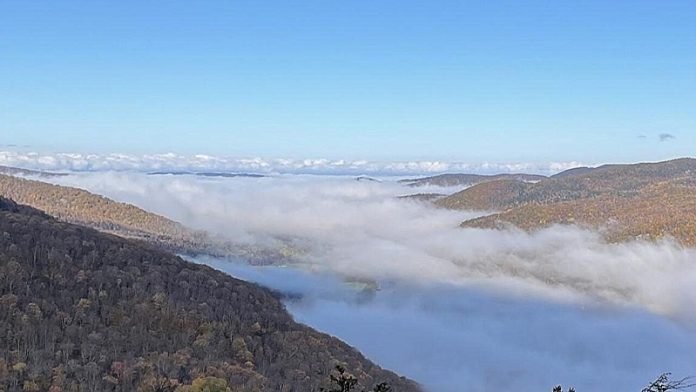
Researchers from the University of Vermont (UVM) have made a surprising discovery about certain forests that could play a crucial role in resisting climate change.
Their findings, published in the journal Ecology and Evolution, reveal that some mountain forests experience a phenomenon known as “cold-air pooling,” where colder air from higher elevations flows down into valleys, creating cooler environments at lower elevations — contrary to the usual warmer valleys and colder peaks.
This unusual temperature pattern, where it gets colder as you go down instead of up, leads to what the researchers call “vegetation inversions.”
Typically, species that prefer cold, like spruce and fir trees, are found at higher elevations. However, in these unique forests, such trees thrive in the lower, unexpectedly cooler valleys.
“Cold-air pooling is fundamentally structuring the forest,” said Carol Adair, a UVM professor and co-author of the study.
This discovery is vital for forest management as it highlights areas where cold-loving species might survive despite global warming.
The study focused on three forested sites in New England, observing the types of trees and monitoring temperatures over two years.
The team found that cold-air pooling is not just a rare or nocturnal occurrence; it happens frequently, during the day, and all year round. The phenomenon was especially pronounced in areas with minimal elevation changes.
These cooler spots may become vital refuges for preserving cold-adapted species as the planet warms. Melissa Pastore, the lead author and former UVM postdoctoral researcher, suggests that these areas could serve as “stepping stones,” providing critical time for species to either migrate or adapt to changing conditions.
The research suggests these forests are not only important for conservation but also for their potential to store carbon and maintain moisture in the soil, which is particularly beneficial during extreme weather conditions.
“Including carbon storage and small-scale recreational opportunities,” Adair added, emphasizing the practical benefits of these ecosystems.
While cold-air pooling offers some protection, it is not a complete solution to climate change. “These forests are still going to warm,” Pastore cautioned, “but it might be slower, and maybe species that might otherwise disappear in a warmer climate will remain longer in these locations.”
This study is a rare piece of good news in environmental science, showing that these unique forests provide essential structure and may help cold-adapted species persist in a warming world.
Adair finds this aspect of her research particularly uplifting, “A lot of my research is telling people why bad things are happening, so this is nice. It’s not all good news, but it’s some good news.”
These findings underscore the importance of including cold-air pooling in ecological models to accurately predict how climate change might affect various species.



